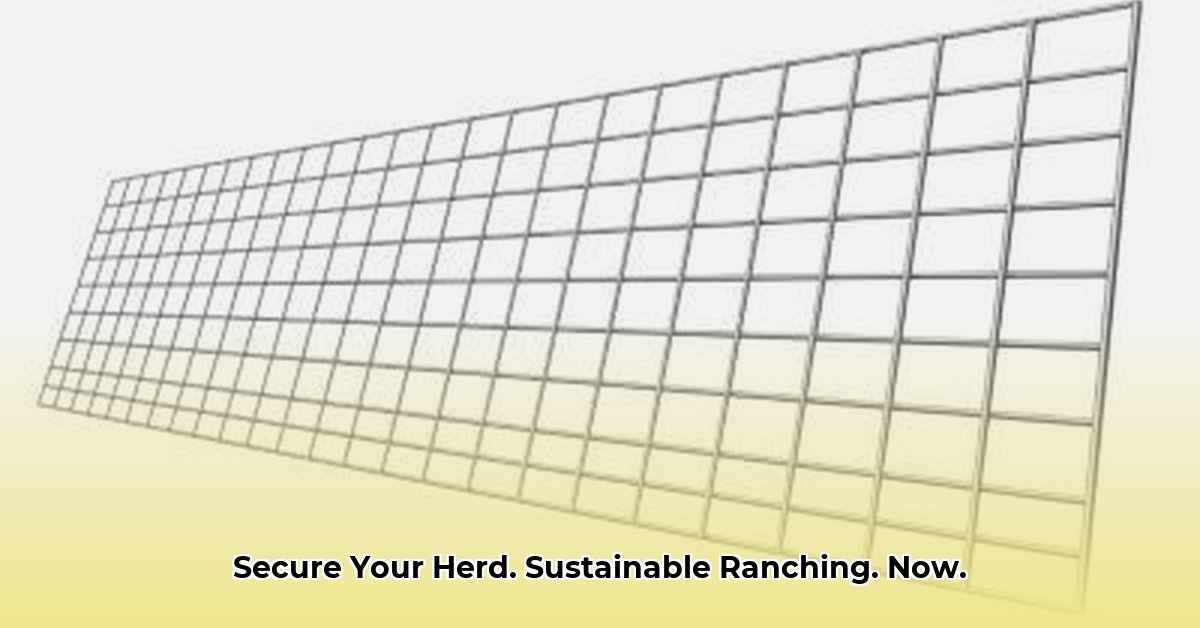
Tractor Supply Cattle Fence Panels: Your Guide to Secure and Sustainable Pastures
Building a strong, reliable fence is crucial for responsible cattle ranching. It ensures animal safety, improves grazing management, and contributes to sustainable agricultural practices. Tractor Supply offers a range of cattle fence panels, but selecting and installing them correctly is essential for optimal results. This guide provides a step-by-step approach to building a secure and sustainable fencing system. For other farm equipment needs, check out Tractor Supply's website.
Choosing the Right Tractor Supply Cattle Fence Panels
Several factors influence the choice of cattle fence panels: land topography, herd size, animal temperament, budget, and long-term goals. Tractor Supply offers various panel types, each with its own advantages and disadvantages.
Wire Panels: These are generally less expensive and easier to install, making them suitable for smaller herds on relatively flat terrain or temporary fencing. However, they are less durable than other options. A higher wire gauge indicates increased strength.
Pipe Panels: More durable and longer-lasting than wire panels, suitable for larger herds, rough terrain, and long-term installations. These panels provide superior strength and resist damage from aggressive cattle. However, they are heavier and more expensive to install.
Combination Panels: Providing a balance between strength and flexibility, these panels offer a compromise between affordability and durability, making them suitable for varied terrain and medium-sized herds.
Consider the long-term cost-effectiveness. While initial investment matters, a durable panel minimizes the need for repairs and replacements, ultimately saving money over time. "A well-planned fence is an investment, not an expense," says Dr. Emily Carter, Professor of Agricultural Engineering at Purdue University.
"Choosing the right panel is about matching the panel's strength to your needs and anticipated challenges," says Dr. Carter.
| Panel Type | Advantages | Disadvantages | Best Suited For |
|---|---|---|---|
| Wire Panels | Inexpensive, lightweight, easy installation | Less durable, may require more frequent repairs | Smaller herds, flat terrain, temporary fencing |
| Pipe Panels | Highly durable, long lifespan | Heavier, more costly installation | Larger herds, rugged terrain, permanent fencing |
| Combination Panels | Combines strength and flexibility | More expensive than wire, less durable than pipe | Medium-sized herds, varied terrain |
Rhetorical Question: Isn't it more cost-effective in the long run to invest in durable panels that require less maintenance?
Installing Your Fence: A Step-by-Step Guide
Effective installation ensures fence longevity and security. Gather necessary tools before starting; these include post pounders or a post hole digger, fence posts (wood or metal), wire cutters, and wire tensioners.
Step 1: Planning and Measurement: Carefully plan the fence line, considering gate placement and potential obstacles. Accurate measurements are crucial for efficient panel placement.
Step 2: Setting the Posts: Securely place posts at consistent intervals, following the manufacturer's guidelines. Proper post spacing is essential for panel stability and alignment.
Step 3: Attaching the Panels: Attach the Tractor Supply panels to the posts using the appropriate fasteners (wire or clamps), ensuring a tight fit. Avoid loose panels which can easily be breached by livestock.
Step 4: Installing Gate(s): Firmly install gate(s), using strong hinges and a secure latch mechanism. Regular inspections will detect any issues early.
Step 5: Final Check: Thoroughly inspect the entire fence line, confirming the absence of weak points or gaps. Repair any defects immediately.
Quantifiable Fact: Proper installation can increase fence lifespan by up to 30%, reducing long-term costs.
Sustainable Ranching: Investing in the Future
Sustainable ranching practices are becoming increasingly important. Choosing durable, high-quality fencing directly contributes to this goal.
- Reduced Waste: Durable panels minimize waste compared to constant repair or replacement of cheaper options.
- Environmental Impact: Look for options from recycled materials or sustainable sources.
- Responsible Land Management: Regular fence maintenance demonstrates responsible land stewardship.
"Sustainable ranching isn't just an environmental trend, it’s good business. By investing in sustainable practices, including the quality of your fencing, you’re creating a more resilient operation," states John Miller, Ranching Consultant at the National Cattlemen’s Beef Association.
Key Takeaways:
- Choosing the right panels depends on your specific needs and budget.
- Proper installation is crucial for fence longevity and effectiveness.
- Sustainable practices, including durable fencing, are environmentally and economically beneficial.
Note: Always refer to the Tractor Supply installation instructions for your specific panel type. Consult with local agricultural experts for customized advice based on your specific environment and herd.